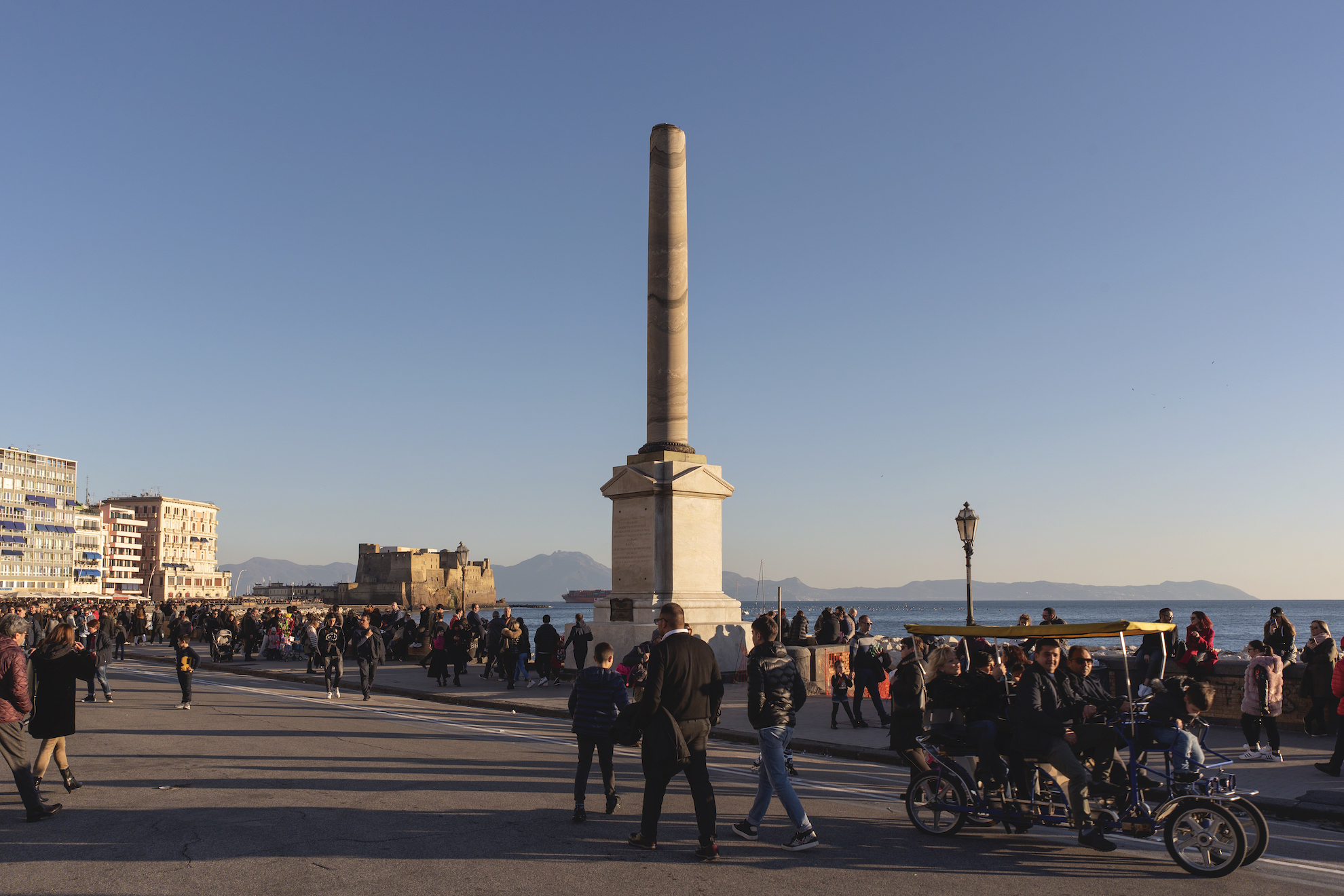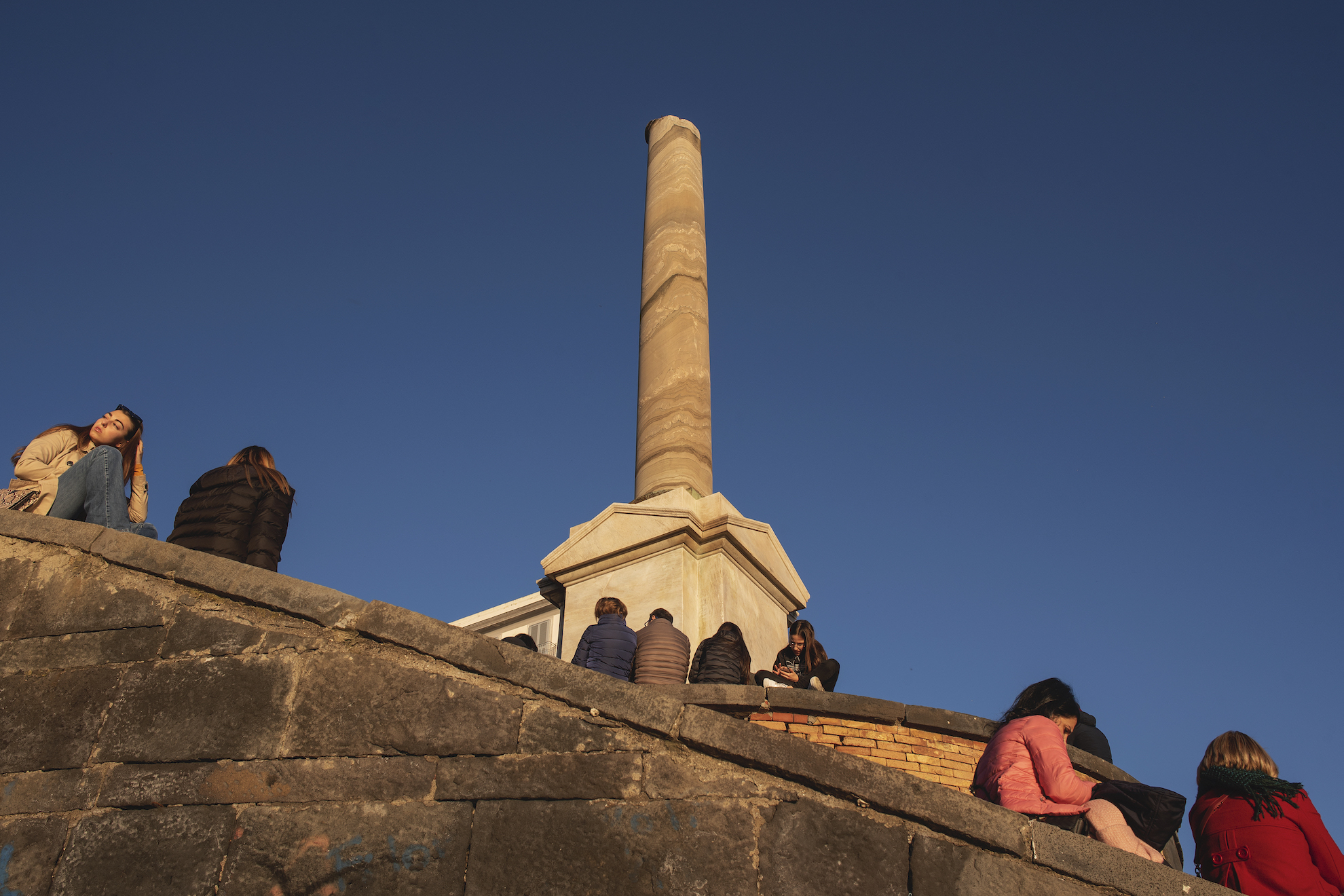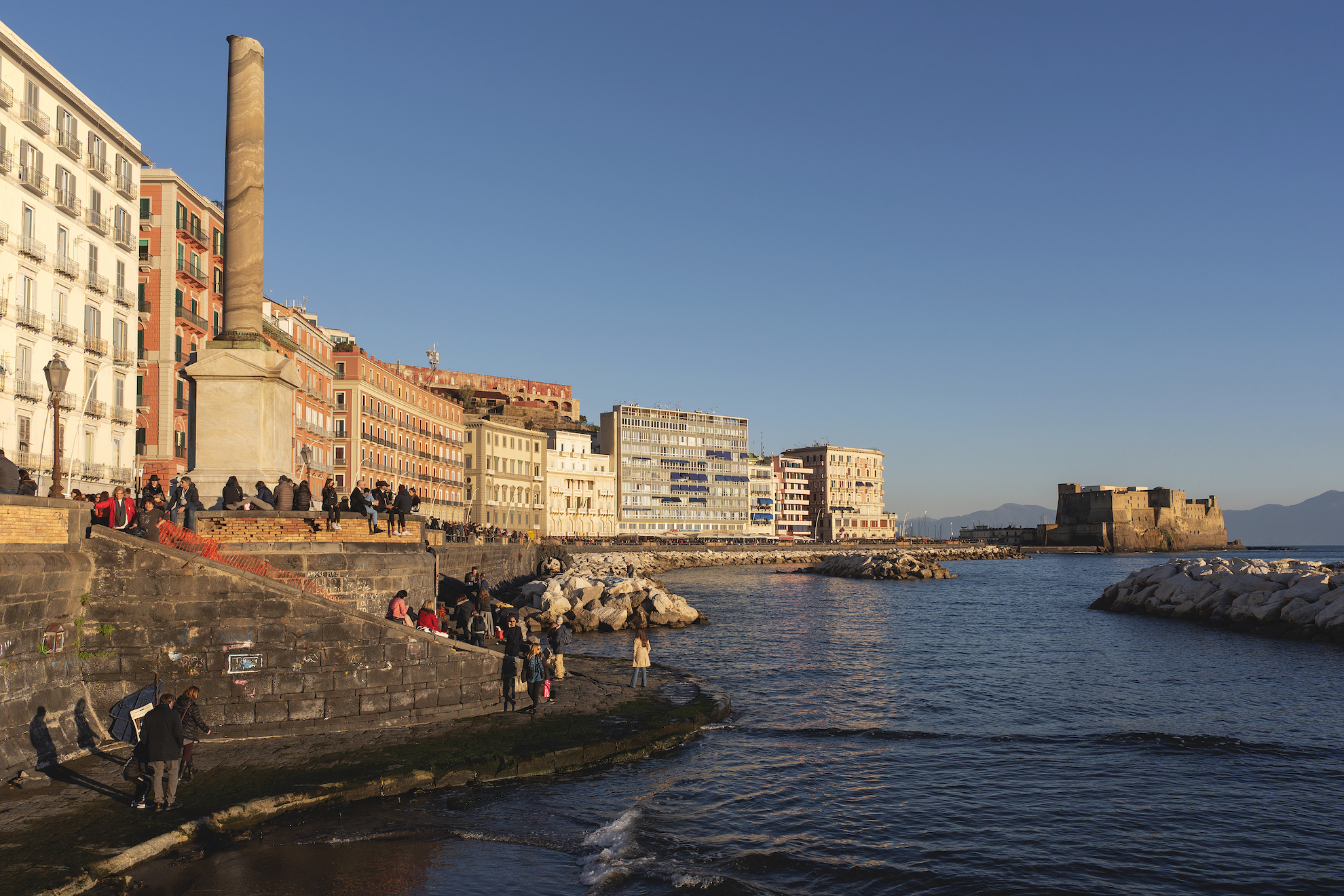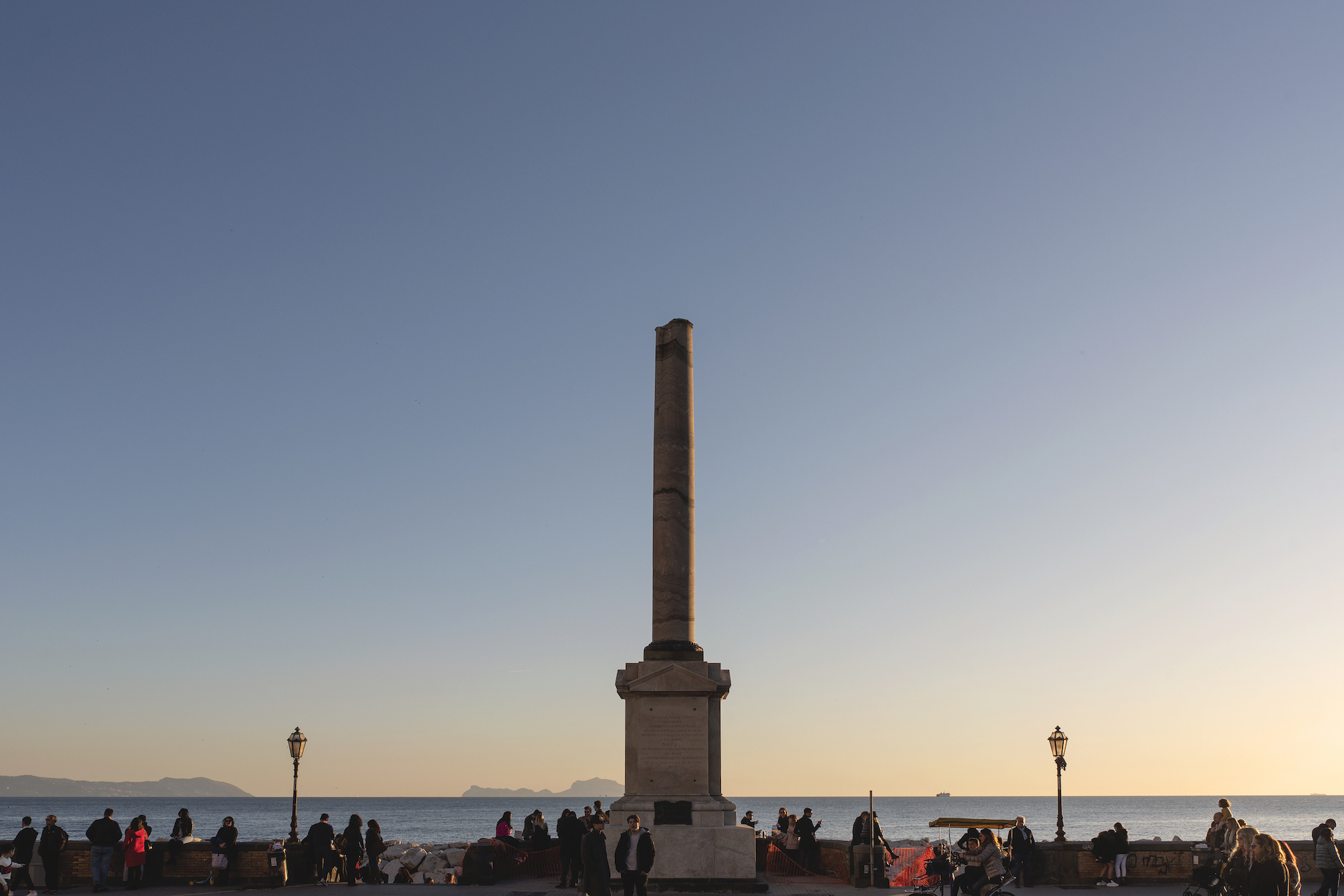On Naples waterfront a monument stands like a lighthouse. Visible by everyone, it is hardly seen by anyone. It looks like an ancient wreck, brought by the sea and hoisted like a trophy to watch over the city.
Ph. Anna Monaco - Trentaremi

It is the Colonna Spezzata (Broken Column), a marble shaft overlooking the sea near Piazza Vittoria. On its sides two flights of stairs in piperno stone gently descend on a semicircular platform. The water lightly touches this small quay, hidden by the foam of the waves when the sea is rough, pushing the smell of salt to the street where the column lies. This little dock was once used by fishermen to sew their nets.
Today, however, many passionate people stop there with fishing rods in search of gilthead breams and porgies. Nearby is a small beach stormed in summer by citizens and tourists, who take advantage of this blue corner for a swim just near heart of the city.
Ph. Anna Monaco - Trentaremi

Since the beginning the story of the Colonna Spezzata was quite troubled. It was 1867. For seven years now the Kingdom of the Two Sicilies had capitulated to the Savoys. The Savoy authorities decided to create a statue in memory of Admiral Francesco Caracciolo, among the prominent personalities of the short Neapolitan Revolution of 1799. Valuable officer of the Royal Navy, Caracciolo began to harbour sympathies in the reforming and anti-monarchist ideas.
“Hurry up: it's very nice that while I must die, you have to cry”Francesco Caracciolo
The new “Italian” Naples was to reproduce the model of city that fought against the previous Bourbon kingdom. Caracciolo, a seafarer with intrepid courage, was the perfect example. Benedetto Croce also fought for the realisation of the sculpture. But due to the lack of funds, only the base of the statue was created for a long time. In 1914, looking into the deposits of the Archaeological Museum of Naples a less expensive solution was found. Finally, an ancient column of cipollino marble (Marmor Carystium) of about twenty tons was chosen. Sixteen horses were needed to carry it to place.
Ph. Anna Monaco - Trentaremi

The column was perhaps one of the building blocks of Nero's 1st century AD theater. Found in the Cathedral in 1600, it initially had to give further support to the bell tower of the Cathedral. Then it was moved in front of the side door of the church of San Paolo Maggiore and finally it was removed and forgotten in the warehouses of the Archaeological Museum.
The definitive work was no longer named after Francesco Caracciolo. Somebody suggested to dedicate it to the dead soldiers of the 1866 battle of Lissa, between the young Kingdom of Italy and the Austrian Empire. But in the end it was decided to commemorate “all those who had lost their lives at sea for the homeland”.
Ph. Anna Monaco - Trentaremi

The Colonna Spezzata has thus become a symbol of postcard Naples. In front of it, the sails stain the blue canvas with Capri drawn on the horizon. On the right the Posillipo hill slides gently until it plunges into the sea. On the left the yellow tuff of Castel dell'Ovo shines on the water. And it is immobile, distracted as it is to admire the harmony of the Gulf. It would have been the ideal place to honor Admiral Caracciolo: he lost the statue, but gave his name to the street, the most beautiful and famous in Naples.

